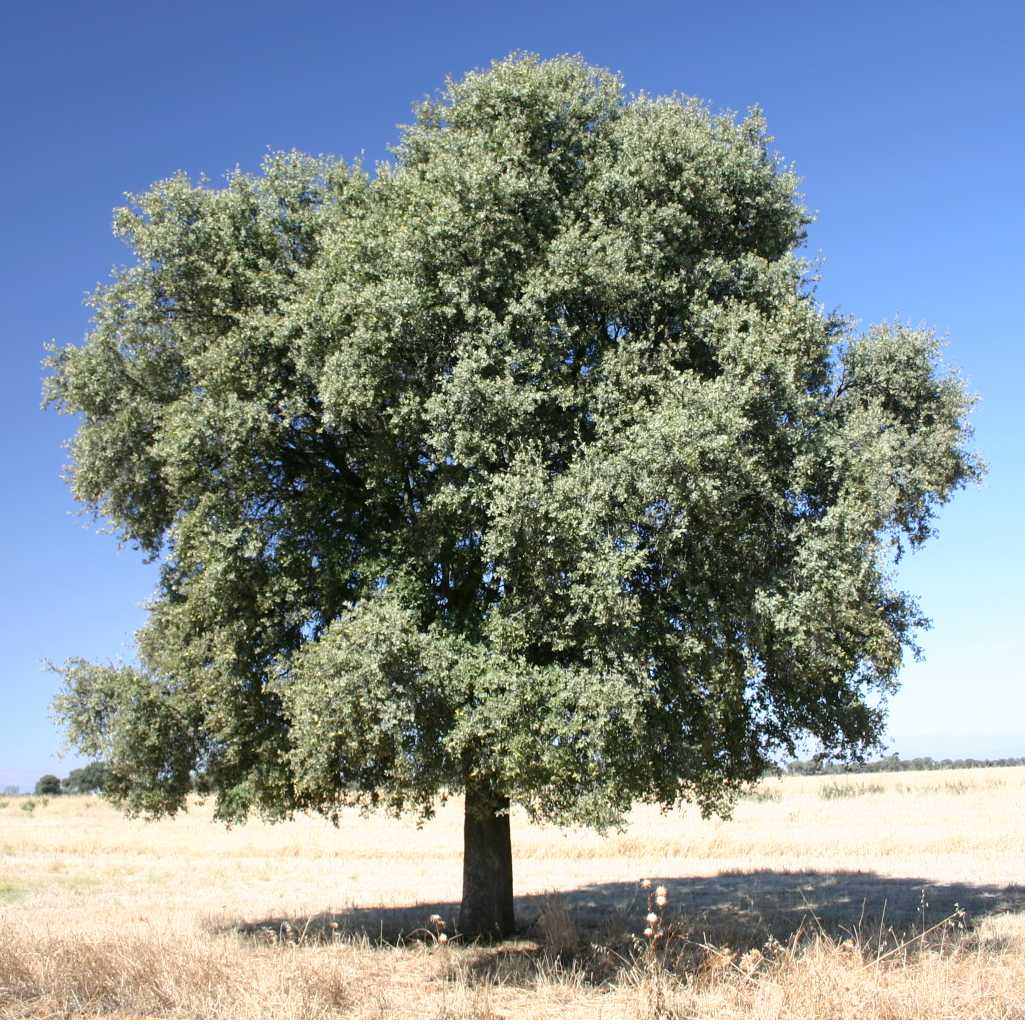In cities, forest ecosystems provide a number of services ranging from giving urban residents a break from the concrete scenery to having beneficial impacts on the environment--for instance, by lowering temperatures, changing wind patterns, reducing energy, and improving air quality. This last service in particular was the focus of a recent study by collaborators from the Sapienza University of Rome and Portland State University. Although the researchers were already aware that Rome's extensive urban forests remove ozone from the city's atmosphere, they knew very little about how different tree species contribute to this process. In fact, the role of biodiversity in ecosystem function is not yet well understood in general, since previous studies on this issue have produced conflicting results.
(Skyline of Rome, Italy)
The researchers predicted that different types of trees would work synergistically to accomplish ozone removal from Rome's air. This seems logical considering that different trees vary in their "ecophysiological and phenological traits," meaning that, among other things, they respire at different rates and respond differently to environmental conditions such as heat and humidity--high levels of which are found during the summer, when ozone levels usually peak. Although ozone is a beneficial chemical in Earth's stratosphere, where it helps protect us against the sun's rays, it can damage anthropogenic materials, harm crops, and have adverse health impacts on humans. Thus, understanding which tree assemblages are best at removing this chemical could significantly improve management plans.
Research for the current study was conducted in Rome, approximately 20% of which comprises public green space. Although there are a number of resident tree species, they can be broadly grouped into three categories--deciduous broadleaves (the most abundant, covering 3747 ha), evergreen broadleaves (covering 2121 ha), and conifers (the least abundant, covering 1605 ha). The ozone-removing properties of these three groups were investigated in 2003--a year that was both hotter and drier than urual--and 2004, which had more typical weather patterns. Weather stations automatically collected information on daily ozone and nitrogen oxide concentrations, temperature, and humidity; these data were entered into complex models that use known tree physiological information in order to estimate how much ozone each tree group could process given the current environmental conditions. In addition to assessing how much ozone was actually removed by the three types of tree throughout the year, the researchers also estimated how much would have been removed if the existing forests consisted of only one type of tree--in other words, if there were no biodiversity.
(Castelporziano, one of the greenest and most biodiverse areas in Rome)
Predictably, ozone levels fluctuated depending on temperature and, therefore, season; values were particularly high late in the summer and frequently reached levels thought to be harmful for human health. As the researchers hypothesized, their models indicated that the different groups of trees likely complemented each other in their ozone uptake activities. This was true both within a year and between years, and resulted from the fact that some trees increased their ozone capturing potential as temperatures rose, while others decreased or remained consistent--a pattern driven by, among other things, variations in the tree groups' photosynthetic activities, leaf transpiration rates, leaf areas, and flow of air and moisture through leaf pores known as stomata. Thus, while there may be ozone removal fluctuations at a local level--within small stands of similar trees--removal across the entire city remains fairly consistent over time because different groups of trees complement each other.
Overall, the total ozone uptake was estimated at just over 300 Mg in both years, with less than 2% variation between the two years of the study. Surprisingly, the reduced-biodiversity models indicated that a similar amount of ozone could be removed if all trees in the city belonged to the same functional group. This seems to suggest that biodiversity is not actually that beneficial to this particular ecosystem service. However, the variation from one year to the next was much higher under this scenario, indicating that the biggest advantage of having multiple species is consistency, rather than amount, of service performed.
(A holly oak (Quercus ilex), one of several species in Rome that, according to the authors, may perform an "ecosystem disservice"--by releasing volatile organic compounds into the air. More research is needed to understand the impacts of these compounds on air quality.)
In addition to providing some insights about the general importance of biodiversity, these findings may also be useful in an applied context. Models like these could help managers decide where to plant trees, what species they should choose, and how many they should install. Although this could be useful information in a variety of habitats, it is likely to be especially helpful in urban areas where ozone can be particularly problematic. These calculations could also shed light on the impacts of replacing native trees with exotics, either intentionally or via accidental introductions.
For those who aren't swayed by the biological aspects of the results, the authors also calculated the potential economic benefits of biodiversity. Previous researchers have estimated that ozone removal services are worth approximately $6750/Mg, which means that the city of Rome saves about $2 million each year thanks to its trees. Reducing ozone also minimizes the risks of ozone-related mortality, resulting in another $3 million or so in savings. Managers in several U.S. cities--including D.C., New York, Baltimore, Atlanta, and Chicago--already tout urban forests as a cost-effective method of reducing air pollution, and these results suggest that other cities would experience similar benefits. Given that over half the world's population currently lives in ever-expanding urban areas, this management practice could improve air quality for a significant number of people.
---
Manes, F., Incerti, G., Salvatori, E., Vitale, M., Ricotta, C., and Costanza, R. 2012. Urban ecosystem services: tree diversity and stability of tropospheric ozone removal. Ecological Applications 22(1): 349-360.
Thanks to the following websites for providing the images used in this post:
http://www.accunet.org/i4a/pages/index.cfm?pageid=3481
http://en.wikipedia.org/wiki/File:Quercus_ilex_rotundifolia.jpg
http://sasaprof.blogspot.com/



No comments:
Post a Comment